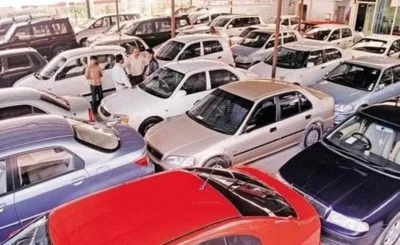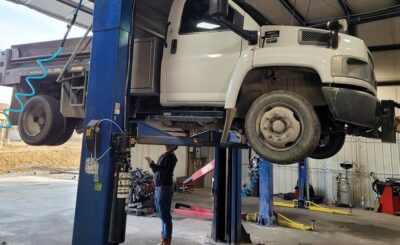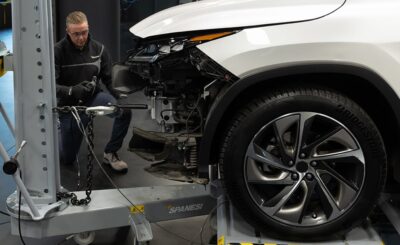The Quiet Transformation Beneath the Hood
Electric car servicing represents a paradigm shift in automotive maintenance that many owners discover only after their purchase when the absence of oil changes and the presence of regenerative braking systems begin to reshape their relationship with vehicle care. In the gleaming showrooms where these vehicles are sold, conversations typically revolve around range anxiety, charging infrastructure, and environmental benefits—rarely touching on the fundamentally different maintenance regimen these sophisticated machines require. This oversight leaves many owners navigating unfamiliar territory, uncertain of how to properly care for their significant investment as they transition from combustion to current.
The Maintenance Gap: What Traditional Mechanics Often Miss
Specialized Knowledge in a Changing Landscape
The most qualified mechanics often speak of electric vehicles with a mixture of respect and caution—acknowledging both the engineering elegance and the specialized knowledge required for proper service:
- High-voltage systems requiring specific safety protocols and certification
- Battery management systems that demand specialized diagnostic tools
- Regenerative braking configurations that integrate with traditional friction brakes
- Thermal management systems critical to battery health and longevity
- Over-the-air update capabilities affecting vehicle diagnostics and performance
“When we first started servicing electric vehicles in Singapore, the learning curve was remarkably steep,” admits a senior technician at a pioneering workshop specializing in EV maintenance. “The diagnostic approach is fundamentally different—we’re looking at data patterns and software issues as much as mechanical components.”
The Surprising Economics of Electric Maintenance
Beyond the Petrol Savings: The Total Cost Equation
The financial calculations around electric vehicle maintenance reveal counterintuitive truths:
- Reduction of approximately 40% in scheduled maintenance costs over vehicle lifetime
- Virtual elimination of many traditional wear components like timing belts and exhaust systems
- Extended brake pad life through regenerative braking (often 2-3 times longer than conventional vehicles)
- Higher costs for specialized components when replacement becomes necessary
- Significantly reduced drivetrain complexity with fewer moving parts to fail
Singaporean EV owners frequently express surprise at their service intervals. “After driving petrol cars for decades, the difference is striking,” explains an early EV adopter who has owned his vehicle for four years. “I remember waiting months for the oil change reminder that never came, gradually realizing how fundamentally different the maintenance schedule would be.”
The Battery: Central Focus of Long-Term Care
Preserving Your Vehicle’s Most Valuable Asset
Battery health management emerges as the central maintenance concern for electric vehicles:
- Regular battery health checks using specialized diagnostic tools
- Thermal management system inspections to ensure optimal operating conditions
- Charging habit evaluations and adjustments to maximize longevity
- Cell balancing assessments to identify early warning signs of degradation
- Cooling system maintenance to prevent temperature-related damage
“In Singapore’s climate, with consistently high temperatures and humidity, battery thermal management becomes particularly crucial,” notes an EV specialist with extensive experience in tropical markets. “We see significantly different battery degradation patterns here compared to temperate regions, requiring locally adapted maintenance approaches.”
The Evolving Service Ecosystem
Finding Qualified Care in a Transitional Time
The service landscape continues to develop, presenting owners with challenging decisions:
- Dealership service centres offering manufacturer-certified technicians but often at premium prices
- Independent specialists emerging with EV-specific expertise and more competitive pricing
- Traditional garages increasingly offering basic EV service capabilities
- Mobile service options specializing in diagnostic and software-related issues
- DIY options significantly more limited than with traditional vehicles
“The infrastructure for electric vehicle maintenance in Singapore has matured considerably in recent years,” observes an industry analyst tracking the EV adoption curve. “We’re seeing specialized training programs developing to meet demand, though qualified technician availability remains a constraint on market growth.”
Software: The Maintenance Dimension Most Overlooked
Beyond Mechanical: The Digital Service Imperative
Perhaps the most revolutionary aspect of electric vehicle maintenance involves the software dimension:
- Over-the-air updates that can fundamentally alter vehicle performance characteristics
- Cybersecurity considerations becoming integral to vehicle health
- User interface optimizations affecting the ownership experience
- Battery management software updates critical to longevity
- Diagnostic capabilities increasingly accessible through smartphone apps
This digital dimension creates both challenges and opportunities for owners navigating the maintenance landscape.
Preventive Strategies: Maximizing Electric Vehicle Longevity
Beyond the Schedule: The Owner’s Role
Proactive maintenance approaches yield particularly significant benefits with electric vehicles:
- Regular monitoring of charging patterns and adjustments based on usage
- Climate control preconditioning while connected to power to reduce battery strain
- Attention to optimal charge levels for daily use versus long-term storage
- Scheduled professional inspections of high-voltage components
- Firmware update vigilance to ensure optimal system performance
“What many new EV owners in Singapore don’t initially grasp is how their daily habits fundamentally affect vehicle longevity,” explains a veteran EV educator. “Small adjustments to charging routines and driving patterns can have remarkable effects on battery health over time.”
The Road Ahead: Evolving Maintenance in a Maturing Ecosystem
Adaptation in a Time of Transition
As the electric vehicle market matures, maintenance approaches continue to evolve:
- Increasing standardization of diagnostic protocols across manufacturers
- Growing availability of qualified independent service options
- Development of advanced battery reconditioning technologies
- Integration of artificial intelligence into predictive maintenance systems
- Emergence of specialized component remanufacturing for sustainability
Conclusion: Embracing the Maintenance Revolution
The shift toward electrification represents not merely a change in propulsion technology but a fundamental reimagining of the vehicle ownership experience, including maintenance expectations and responsibilities. As early adopters have discovered, the reduced mechanical complexity of electric vehicles translates to different—though not necessarily fewer—maintenance considerations, with software and battery health management taking centre stage. For drivers navigating this transition, understanding the unique maintenance needs of these sophisticated machines becomes essential to preserving their investment and experiencing the full benefits of electric mobility. The future belongs to those who adapt to this new paradigm, finding qualified partners who understand the unique requirements and possibilities of electric car servicing.








